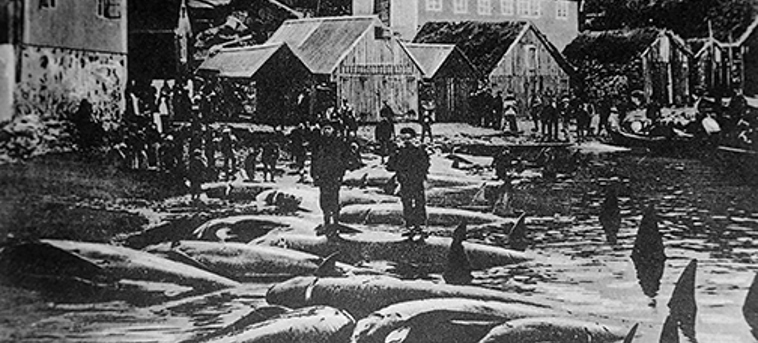
The Evolution of Faroese pilot whaling
Over the past decades, the Faroese whale drive has become much better organised. Today, only those who have a legally required authorisation are permitted to kill whales.
30 years ago the traditional whaling spear, which was used to stab whales, was banned. Likewise the traditional hook, which was both sharp and pointed, has been replaced by the rounded blowhole hook, which does no damage to the whales when they are drawn up on the shore.
In the past, whales were killed with a special knife. Today, a regulation spinal lance, designed by a Faroese veterinarian, is used. The whale loses consciousness and dies within a few seconds.
Faroese animal welfare law stipulates that whales are to be killed as quickly as possible to minimise any suffering. Today, an entire school of whales is killed within 5 to 10 minutes.
In the 1980s, widespread media campaigns by international environmental and wildlife protection groups increased international focus on whale hunting in the Faroes. This new attention also brought with it a greater awareness in the Faroes of the need for better scientific data on pilot whales as well as improvements in hunting methods.
At the same time, Faroese authorities also realised there was a need for accurate information on whale hunting, since what was reported abroad was often inaccurate or downright false.
Today, the Faroese government takes active and continued steps to make updated information available internationally on the state of the pilot whale population and the regulations and methods used in Faroese whaling. Of the population of about 778,000 whales, the Faroese take on average around 800 whales a year.
SUSTAINABLE
COMMUNAL
FOOD
NATURAL


